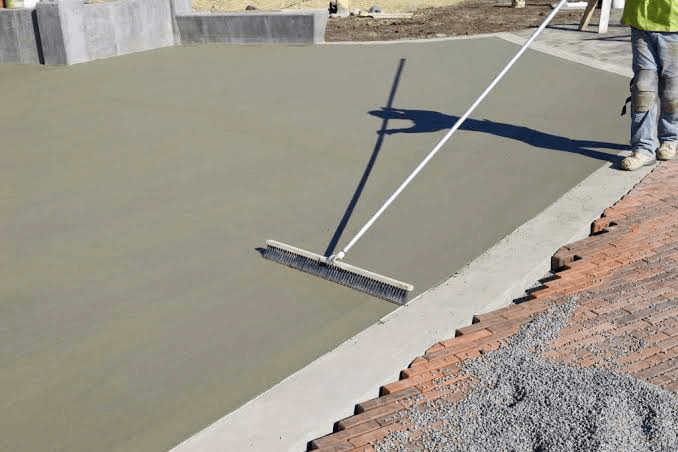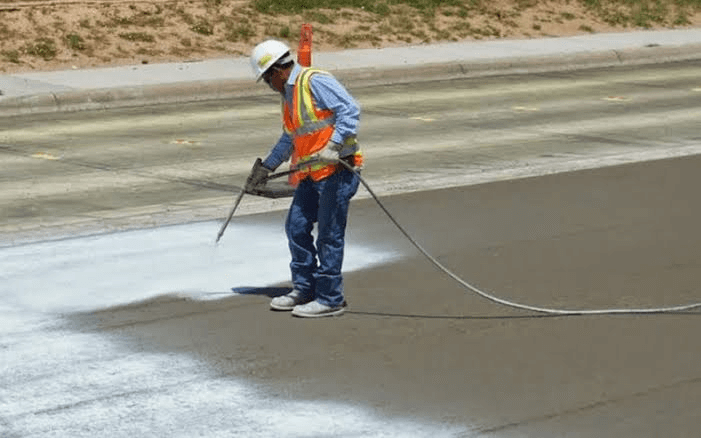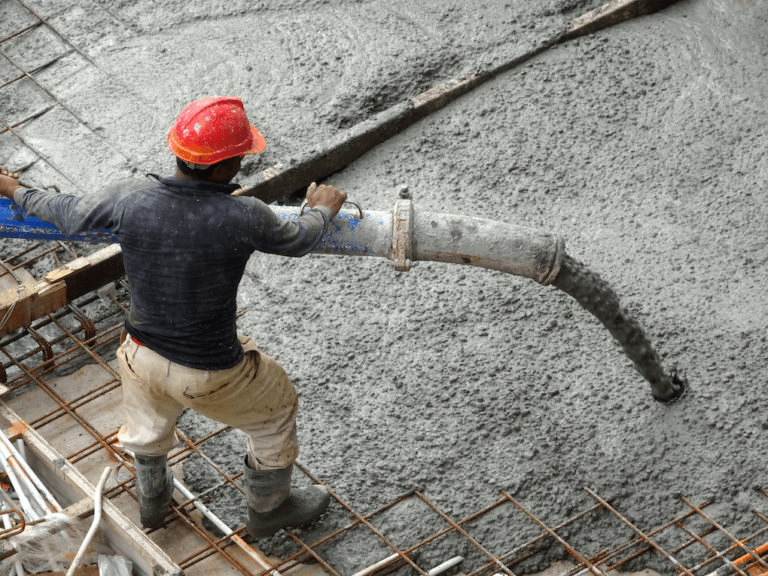Concrete floors and patios are very common in our household, and concrete is also the base of all types of construction because of its toughness, durability, and strength.
Concrete takes time to gain that level of solid strength, and then comes its maintenance. Many ponder maintenance concerns, such as the duration before walking on concrete surfaces without leaving marks or when parking your car is safe.
Understanding these queries is essential for manual concrete maintenance methods, and we’re here to provide the answers you seek.
We understand, and we are here to answer all your questions.
How Long Does It Take for Concrete to Dry?

Typically, concrete takes about two days to get dry enough to drive or walk on. But it takes about 28 days to reach its full potential, called curing.
Let’s understand what curing is and how it works.
What is Curing?
Though these terms are often used interchangeably, Curing is not the same as drying. The process starts from the time you pour the concrete mixture and lasts for several days. It sets the concrete perfectly and gives it that lifetime hardness and durability you desire from it. But to understand it better, here is the basic difference between the two.
Difference Between Drying and Curing the Concrete
Drying of the concrete is the initial process of removing extra moisture content in the concrete mixture. It aims to get enough strength for further construction activities, walking, or driving.
Curing is a long-term process in which the concrete poured achieves full strength and durability. The process takes place below the surface area; it forms the core. It takes several weeks to get maximum solidity and develop cracking and shrinkage resistance.
Concrete Curing methods
There are different methods to successfully cure the concrete to make the process slow or fast. Here are some of them.
1. Water Curing

Water curing is the most popular method to treat concrete. In this process, the placed concrete is sprayed or flooded with water when it is still new (just after the first few hours). This process is a way to maintain the water content of the concrete while also ensuring that there are no air pockets left, which could cause the concrete to crack.
2. Wet Covering

This curing method places a wet burlap or fabric on the newly poured concrete for about 24 hours. You may have often noticed this while visiting a construction site. This process is usually used for standing structures like pillars or statues that won’t be able to hold water and in areas where water-curing methods don’t seem possible.
3. Framework Curing

This method of curing is used when the framework is thick, and it isn’t easy to keep the cement hydrated. This method is usually used in big construction projects. The temporary framework is made with wooden cuttings and removed after the curing. The thickness of the frame is a crucial factor here, which depends on the place’s temperature.
4. Membrane Curing

In this process, a liquid solution is sprayed over concrete, solidifying later and forming a membrane on the surface. There are two types of solutions: water-based and oil-based. A water-based solution is preferred because it can be easily washed away with water after the concrete is cured, whereas additional efforts are required to remove the oil-based membrane.
Factors that Decide How Long the Concrete Will Take to Dry
The concrete mixture doesn’t need to take the same amount of time to dry because some factors are responsible for concrete drying time. Some of them are:
1. Moisture
Water is a very important factor because it plays a major role in the drying, hardening, and curing concrete. Without water, the cement mixture cannot form a hard, crystalized bond and will not be able to gain its strength. The quantity of water plays a crucial role; too much water may cause flaking, shrinking, or cracks and less water will make the concrete structurally weak.
2. Temperature
Hot temperature is ideal for curing concrete because it makes the evaporation of water faster. At the same time, too much humidity in the air disturbs the water level in concrete. That is why summer is the best time to do it; if you are trying to work with concrete during winter, try using concrete blankets, which keep the temperature of the surface higher to boost the curing and drying process.
3. Composition of The Mix
Typically, the concrete mix is made up of water, sand, and gravel, but the quantity of each element will decide its curing time. You can add accelerants to the mix to speed up the curing process, but that won’t give your concrete the same strength that it would have if cured naturally. These quick-drying formulas can be used in small areas, but we do not recommend using them on the entire floor.
Conclusion
In short, after 24 to 48, the concrete is safe to walk on. After approximately seven days, you can drive on it, but it achieves its full strength and gets fully dry after 28 days of pouring under ideal circumstances; you can paint the concrete only after that. There are various modern ways to make the process faster, but they do not guarantee the same work quality as the traditional method mentioned above.
Now that you know how the drying process works, Whether the concrete pavement is for residential driveways or a commercial foundation, make sure to give the required time it asks for to get cured.

